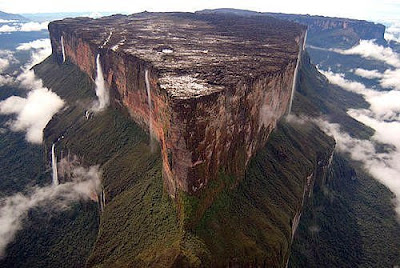- Don Juan Pond, the hypersaline lake in western Antarctica which has even greater salinity than the Dead Sea
- With a salinity of over 40%, Don Juan Pond is the saltiest body of water in the world
- It is named after the two pilots who first investigated the pond in 1961, Lt Don Roe and Lt John Hickey
- It is a small lake, only 100m by 300m, and on average 0.1m deep, but it is so salty that even in the Antarctic, where the temperature at the pond regularly drops to as low as -30 degrees Celsius, it never freezes
- It is 18 times saltier than sea water, compared to the Dead Sea which is only 8 times saltier than sea water
- At its saltiest, Don Juan Pond contains 671 parts per thousand salt, compared to 35 and 300 for the ocean and the Dead Sea respectively
- A beautiful salty pool in Antarctica's Dry Valleys is teaching scientists about the potential for life in brine pools on ancient Mars
- The study also reveals a previously unreported mechanism for producing an important greenhouse gas - nitrous oxide - in Antarctic habitats
- Research at Antarctica's 'Mars on Earth' reveals non-organic mechanism for production of important greenhouse gas
- Possibly even more important, the discovery could help space scientists understand the meaning of similar brine pools in a place whose ecosystem most closely resembles that of Don Juan Pond
- "The pond’s soils and brines and the surrounding rock types are similar to those found on Mars,” said Samantha Joye, a faculty member in the department of marine sciences in the Franklin College of Arts and Sciences and lead author on the paper
- “So it provides an ideal location to assess microbial activity in extreme environments. While we did not detect any ‘bio-gases’ such as hydrogen sulfide and methane, we did, surprisingly, measure high concentrations of nitrous oxide, which is normally an indicator of microbial activity. We needed to find out whether a non-organic process could account for this nitrous oxide production.”
- Scientists have been fascinated with Don Juan Pond since its discovery in 1961. From the time of its discovery, researchers realized they had found a place like nowhere else on Earth
- Researchers more than 30 years ago reported finding abundant and varied microflora of fungi, bacteria, blue-green algae and yeasts, since then and during the Joye team’s work, such life has been non-existent
- Since the depth level and area covered by the pond (which is fed by hypersaline groundwater) have demonstrably varied over the years, this wasn’t unexpected
- The pond was named after Lieutenants Donald Roe and John Hickey, both of whom were members of the first field party to study the pond
- The Lake Vanda station (New Zealand) is one of the oldest long term camps in the Dry Valleys
- Over the last four decades a lot of research in many disciplines has based out of this little hut
- During the height of summer the edges of Lake Vanda melt enough to warrant the use of a small boat




















